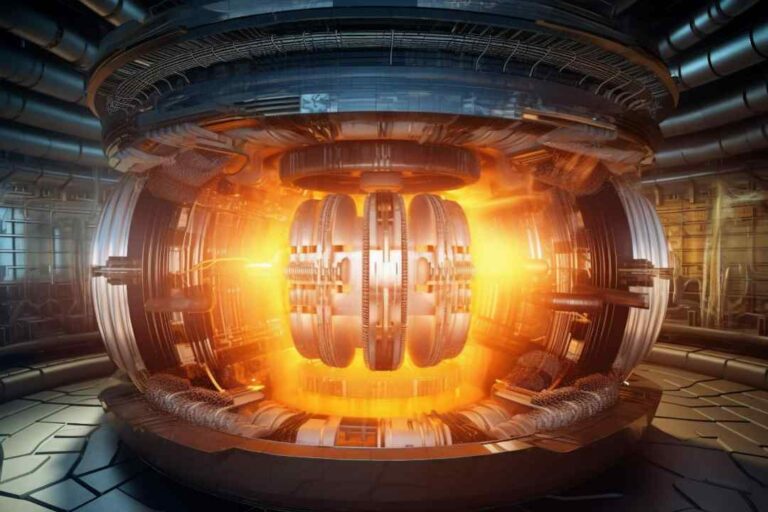The Korean fusion reactor achieves a new milestone by sustaining a plasma temperature of 100 million degrees.
The most recent record for the plasma operation time of the Korean artificial sun, KSTAR, was set during the first plasma campaign of the device after the material of the divertors, one of the plasma facing components, were changed to tungsten monoblocks.
KFE in December announced that during the last KSTAR plasma campaign which was conducted between December 2023 and February 2024 it sustained the plasma with ion temperatures of 100 million degrees Celsius for 48 seconds. Also, it sustained the high confinement mode (H-mode) beyond 100 seconds.
Therefore, for practical applications of fusion energy, it is necessary to achieve the necessary density and temperature of plasma where the observed fusion reactions take place for prolonged periods. Different plasma experiments are being performed in fusion devices such as KSTAR by the fusion researchers in order to attain it.
KSTAR, a superconducting tokamak, has been pioneering in long pulse plasma operations. KSTAR first accomplished 100 million degrees plasma in 2018 and it was able to maintain 100 million degrees ion temperature plasma for 30 seconds in 2021.
In the latest campaign, the KSTAR team was able to sustain ultra-high-temperature plasma for 48 seconds, while the ion temperature is 100 million degrees. This accomplishment was facilitated by the enhanced operation of the plasma heating systems and developments in high temperature plasma operation and control mechanisms. The plasma duration set a new record in the field of ion temperatures exceeding 100 million degrees Celsius.
Moreover, the KSTAR team also achieved stable H-mode sustainment of more than 102 seconds, which is the fundamental mode for maintaining the high temperature of plasma density.
This is mainly because of the successful upgrade applied in KSTAR’s divertors with the use of tungsten in the year 2023. s compared with the previous divertors made of Carbon, the new tungsten divertors experienced only 25% increase in surface temperature with the same level of heat loads. This offers substantial benefits for long-pulse high heating power processes, for example magnetron sputtering.
During these experiments, the KSTAR team demonstrated that the switch to the tungsten divertors was a success and that the new components were working as intended. They also agreed that fundamental parts of KSTAR, including heating, diagnostic, and control systems, had provided the necessary system reliability for plasma maintenance for an extended period of time.
Dr. Si-Woo Yoon, the Director of the KSTAR Research Center added: “Nonetheless, thanks to stiff hardware tests and extensive campaign preparations, for the first experiment in the environment of the new tungsten divertors, KSTAR records were exceeded within a short time”. He also said that “In order to realize the ultimate goal of KSTAR operation, further improvement of the performance of heating and current drive devices will be pursued step by step with the goal while the core technologies for long pulse high performance plasma operation will also be made secure. ”
The milestone of KSTAR for the year 2012 is to achieve up to 300 seconds of plasma operation with ion temperature of more than 100 million K. In order to achieve this goal the KSTAR team has been concentrating on important research fields as well as enhancing the device parameters. This entails incorporating extra tungsten plasma facing components and feedback control system supported by artificial neural networks to enhance the performance of the device.
To this, KFE President Dr. Suk Jae Yoo concurred, saying that ‘this research is a green light for acquiring core technologies required for the fusion DEMO reactor’, and that ‘we will do our best to secure the core technologies necessary for the operation of ITER and construction of future DEMO reactors. ’
However, KSTAR researchers through collaborative research with researchers from PPPL, USA recently established an error field(EF) optimization model using KSTAR’s external magnetic coils, and identified reliable control logic for stabilizing the instabilities both at the edge and the center of plasma through extensive experimental and simulation studies. This research was published in Nature Communications in February 2024 under the title of “Tailoring tokamak error fields to control plasma instabilities and transport. ”
Do not forget to share your opinion with us to provide you with the best posts !




0 Comments